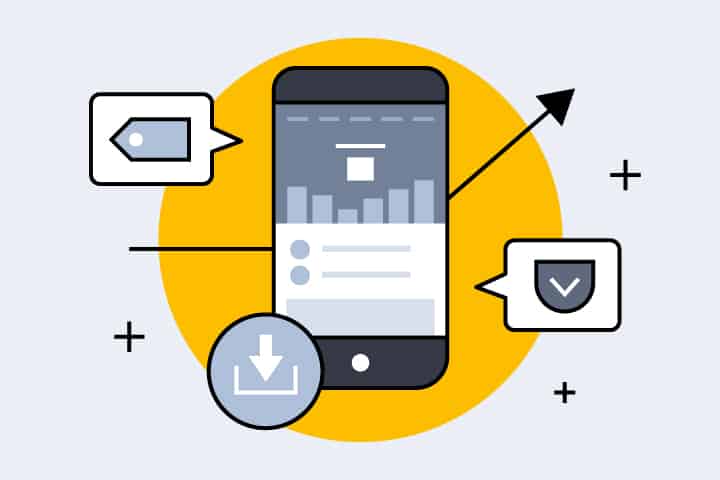Have you ever wondered what makes certain websites so compelling that you end up purchasing something you didn’t initially plan to? The secret lies in a powerful strategy known as Conversion Rate Optimization (CRO). At its core, CRO involves enhancing your website to boost the percentage of visitors who take a desired action, be it making a purchase, signing up for a newsletter, or downloading a guide.
Understanding the Conversion Funnel: Every visitor to your site embarks on a journey, often visualized as a funnel. At the top are all your visitors, and at the narrow end are those who convert. The goal of CRO is to widen this narrow end, ensuring more visitors complete the journey successfully. But how? It’s about understanding and enhancing user experience at every step.
Key Elements of CRO:
- User Experience (UX): A seamless UX design makes navigation intuitive and enjoyable.
- Content Relevance: Your content should answer the ‘what’s in it for me?’ question at first glance.
- Call-to-Action (CTA): Clear and compelling CTAs guide users towards conversion.
Practical Example: Consider Amazon’s ‘1-Click ordering’. This feature, simplifying the purchase process, is a classic example of CRO in action. Amazon reported a significant boost in sales post its implementation – a testament to effective CRO.
Why CRO is a Game-Changer for Online Businesses
In today’s digital marketplace, having a website isn’t enough. The digital landscape is teeming with competition, and CRO is the ace up your sleeve to stand out.
Impact on Sales and Revenue: A well-optimized site does more than just look good. According to Adobe, companies with strong UX have seen a revenue increase of up to 400%. This is no surprise, as effective CRO directly influences the number of visitors converting into customers.
Building Customer Trust and Loyalty: CRO isn’t just about one-time sales; it’s about building relationships. A site optimized for user experience shows that you value your customers’ time and needs, fostering trust and loyalty.
The Data-Driven Approach: CRO isn’t about guesswork; it’s driven by data. By analyzing user behavior through tools like Google Analytics, businesses can make informed decisions. This approach reduces the risk involved in making changes to your site, as they are based on real user feedback and behaviors.
A Real-World Success Story: Let’s look at a case study from Moz, a leader in SEO software. By simply changing their call-to-action from ‘Start my free 30-day trial’ to ‘Start my free trial’, they saw conversions jump by 20%. This small, data-informed change had a significant impact, showcasing the power of CRO.
Calculating Conversion Rate: A Step-by-Step Guide

Ever heard the phrase, “What gets measured gets managed”? This couldn’t be truer in the world of Conversion Rate Optimization (CRO). Knowing your conversion rate is the first step in understanding how well your site performs and where it can improve. But how exactly do you calculate it?
Simple Math Behind Conversion Rate:
- Identify the total number of conversions (these could be sales, sign-ups, downloads, etc.).
- Determine the total number of visitors to your site.
- Use the formula: \( \text{Conversion Rate} = \left( \frac{\text{Total Conversions}}{\text{Total Visitors}} \right) \times 100 \).
Example in Action: Imagine your online store had 15,000 visitors last month and made 300 sales. Using our formula, your conversion rate would be \( \left( \frac{300}{15,000} \right) \times 100 = 2% \). Simple, right?
Beyond Numbers: Gaining Insights from Conversion Metrics
Now, you’ve got your conversion rate. But what next? This number is more than just a percentage; it’s a gateway to deeper insights.
Understanding User Behavior:
- Where are users dropping off? Tools like Google Analytics can show you at which stage potential customers are leaving your site.
- What pages are performing best? Identify which pages have the highest conversion rates. Maybe it’s your homepage, a specific product page, or a blog post.
Applying the Insights: Let’s say you discover that most users leave at the checkout stage. This insight could indicate a need for a simpler checkout process or more payment options.
Real-World Example: A report by Baymard Institute revealed that the average cart abandonment rate is nearly 70%. By analyzing conversion metrics, many online retailers identified checkout issues and implemented changes, such as removing hidden costs or simplifying forms, significantly reducing cart abandonment.
Metrics as a Continuous Improvement Tool:
- Regularly review your conversion rate and related metrics.
- Experiment with changes to your website and measure the impact.
Remember, your conversion rate isn’t just a number. It’s a reflection of user experience, and by understanding and improving it, you’re not just boosting numbers – you’re creating a better experience for your visitors. And isn’t that what it’s all about?
User Experience: The Heart of Conversion Optimization
In the bustling digital marketplace, the design of your website is like the storefront of a shop. It can either invite people in or turn them away. That’s why the key to a successful website lies in its simplicity and engagement. But what does this actually mean?
The Power of Simplicity:
- Easy Navigation: Imagine walking into a store where everything is easy to find. That’s what your website should feel like. Menus should be intuitive, and important information should be just a click away.
- Clutter-Free Design: Less is more. A clutter-free design not only looks good but also makes it easier for visitors to focus on what’s important – your content and products.
Engaging Content:
- Interactive Elements: Quizzes, calculators, or interactive guides can significantly increase user engagement.
- Compelling Visuals: High-quality images and videos can convey your message more effectively than text alone.
Real-Life Success Story: Take Dropbox, for instance. Their simplistic design and clear CTA led to a significant increase in their conversion rate. They made it incredibly easy for visitors to understand and use their service, resulting in more sign-ups.
Mobile-First Approach: A Necessity for Modern Websites
Did you know that over 50% of global website traffic comes from mobile devices? This statistic from Statista highlights why a mobile-first approach is crucial.
What is Mobile-First Design?
- It means designing your website for mobile devices first, then scaling up to larger screens.
- This approach ensures that your site looks and works great on smaller screens, where a growing number of your visitors are.
Benefits of Mobile-First Design:
- Improved User Experience: A mobile-friendly site is easier to navigate and read on smaller screens.
- Better SEO Rankings: Google prioritizes mobile-friendly websites, so a mobile-first design can help boost your search engine rankings.
Adapting to the Mobile World:
- Responsive Design: This ensures your site automatically adjusts to fit the screen it’s viewed on, be it a phone, tablet, or desktop.
- Touch-Friendly Interface: Large buttons and easily accessible menus make navigation a breeze on touch devices.
Remember, in today’s fast-paced world, your website needs to be accessible and appealing to everyone, regardless of the device they are using. By focusing on a mobile-first design, you’re not just following a trend; you’re meeting your users where they are.
Building Trust and Credibility Online

In the digital world, trust is a currency. How can you earn it? One effective way is through customer testimonials and social proof. These elements serve as endorsements of your products or services from those who have already experienced them.
The Power of Testimonials:
- Relatable Stories: When potential customers read or hear about someone else’s positive experience, it creates a sense of reliability. A study by BrightLocal found that 88% of consumers trust online reviews as much as personal recommendations.
- Diverse Voices: Including a range of testimonials from different demographics can appeal to a broader audience.
Social Proof in Action:
- User-Generated Content: Encourage customers to share their experiences on social media.
- Ratings and Reviews: Displaying them prominently on your website can significantly influence purchasing decisions.
Example of Effective Use: Airbnb uses customer reviews to build trust. New users often rely on these reviews to decide on bookings, demonstrating the impact of social proof.
Transparency in Pricing and Product Availability
Ever left a website feeling frustrated due to hidden costs or unclear product availability? You’re not alone. Transparency in pricing and availability is crucial in building trust with your audience.
Why Transparency Matters:
- No Hidden Surprises: Be upfront about costs, including shipping and taxes. This honesty helps to build trust and reduces cart abandonment rates.
- Clear Availability Information: Inform customers about stock levels. If an item is out of stock, offer alternatives or the option to be notified when it’s back.
Implementing Transparency:
- Easy-to-Find Pricing: Ensure that pricing is clearly visible and easy to find on your website.
- Real-Time Updates: Keep product availability information updated in real time to avoid customer disappointment.
Remember, trust is hard to earn and easy to lose. By being transparent and using social proof effectively, you’re not just selling a product or service; you’re building a relationship based on trust and credibility.
Dynamic Promotion Strategies for Immediate Impact
Welcome to the exciting world of first-time buyer promotions, where the right offer can transform a browser into a loyal customer. But what makes an offer truly compelling?
Key Elements of a Successful First-Time Buyer Offer:
- Exclusive Discounts: Who doesn’t love a good deal? Offering a special discount for first-time purchases can be a strong incentive.
- Free Trials or Samples: This approach works wonders, especially for subscription-based services or products that people prefer to try before buying.
Making the Offer Stand Out:
- Clear Communication: Ensure that your offer is clearly communicated on your website. It should be one of the first things a visitor sees.
- Limited Time Frame: Adding a time limit can create a sense of urgency, encouraging quicker decision-making.
Real-World Success Example: Look at how streaming services like Netflix or Spotify have mastered this art. By offering a free first month, they attract millions of new subscribers who often stay on as paying customers.
The Art of Creating Urgent, Irresistible Coupon Codes
Moving on to the realm of coupon codes, these little gems can be a game-changer for your conversion rates. But there’s an art to making them irresistible.
Crafting the Perfect Coupon Code:
- Strategic Timing: Consider offering coupon codes during holidays or special events when people are more inclined to shop.
- Personalization: Tailoring codes to individual customer preferences can significantly increase their effectiveness.
Statistics Speak Volumes: According to a report by ReadyCloud, over 60% of online shoppers say that receiving a discount or coupon code has influenced their buying decision. That’s a number you can’t ignore!
Effective Coupon Code Strategies:
- Scarcity: Highlight the limited nature of the offer.
- Visibility: Ensure your coupon codes are easy to find and apply.
Remember, the goal is to create a sense of urgency without pushing too hard. It’s about striking that perfect balance between enticing and overwhelming your potential customers.
Empowering Decisions with Cutting-Edge CRO Tools
In the fast-paced world of Conversion Rate Optimization, keeping up with the latest tools can give you an edge. But with so many options out there, which ones are truly redefining the game in 2024?
Exploring the Leaders in CRO Tools:
- Google Analytics: An indispensable tool for tracking website performance and user behavior.
- Optimizely: Known for its advanced A/B testing capabilities, allowing you to test different website versions to see which performs best.
- Hotjar: Offers heat mapping and user session recordings to provide insights into how users interact with your site.
Why These Tools Stand Out:
- They offer actionable insights that can inform your CRO strategies.
- Each tool has unique features that cater to different aspects of CRO, from user behavior tracking to experimental testing.
Harnessing the Power of Heat Maps and Intelligent Analytics
Now, let’s dive into two specific tools that are revolutionizing CRO: heat maps and intelligent analytics.
The Insightful World of Heat Maps:
- Visual User Journey: Heat maps show you where users click, scroll, and focus on your site, providing a visual representation of their journey.
- Identifying Problem Areas: Maybe there’s a button on your site that users consistently miss. A heat map can reveal such issues.
Intelligent Analytics at Work:
- Predictive Analysis: Tools like Google Analytics use AI to predict future user behaviors based on past data.
- User Segmentation: These tools allow you to segment users based on behavior, helping to tailor your CRO efforts more effectively.
Did You Know? According to a study by CXL, using heat maps for website optimization can increase conversions by up to 13%. That’s a significant boost for any business!
Remember, the right tools can turn a sea of data into actionable insights. By leveraging these cutting-edge CRO tools, you can make informed decisions that directly impact your site’s performance and user experience.
Email Marketing: A Catalyst for Customer Retention

Let’s face it: cart abandonment is like the ghost at the feast for online retailers. But did you know that targeted email strategies can be your secret weapon in combating this issue? It’s all about reaching out to customers at the right time with the right message.
Effective Cart Abandonment Email Tactics:
- Timely Follow-Ups: Sending an email reminder a few hours after a cart is abandoned can gently nudge the customer back.
- Incentivize the Return: Offering a small discount or free shipping in the follow-up email can sweeten the deal.
Impactful Statistics: According to SaleCycle, cart abandonment emails have an average open rate of over 40%. That’s a lot of potential sales you could be reclaiming!
Personalization: The Key to Email Campaign Success
Now, let’s talk personalization. In the world of email marketing, it’s not just a buzzword; it’s a game-changer. Personalized emails are like addressing someone by their name in a crowded room; they immediately capture attention.
Why Personalization Matters:
- Increased Engagement: Personalized subject lines can lead to higher open rates.
- Building Relationships: Tailored content shows customers that you understand their needs and preferences.
How to Personalize Effectively:
- Use Customer Data Wisely: Leverage data like browsing history and past purchases to create relevant content.
- Segment Your Audience: Not all customers are the same. Segment your email list to deliver more targeted messages.
Real-World Example: Amazon excels at this. Ever noticed how their emails often showcase products you’ve been eyeing? That’s personalization at its finest.
Remember, in email marketing, a one-size-fits-all approach just doesn’t cut it anymore. By employing strategies to reduce cart abandonment and focusing on personalization, you can turn your email campaigns into powerful tools for customer retention and conversion.
Checkout Optimization: Smoothing the Path to Purchase
Imagine you’re in the express lane of your favorite store, ready to check out, and suddenly, you’re asked to fill out a lengthy form. Frustrating, right? This scenario is similar to what online customers experience with a complicated checkout process.
The Art of Simplification:
- Fewer Steps: The less there is to do, the better. Reduce the number of steps to checkout to the bare minimum.
- Form Autofill: Implementing autofill can save your customers time and reduce manual entry errors.
Powerful Stats to Consider: A report from the Baymard Institute suggests that the average large-sized e-commerce site can gain a 35.26% increase in conversion rates with an optimized checkout design. That’s huge!
Secure and User-Friendly Payment Solutions
When it comes to making payments, security and ease are the two pillars that can uphold or undermine the customer’s confidence.
Building a Fortress of Trust:
- Encryption: Make sure your payment gateway encrypts data to keep sensitive information safe.
- Multiple Payment Options: From credit cards to digital wallets, offering various payment methods can cater to different customer preferences.
Staying on the Cutting Edge:
- Up-to-Date Solutions: Always keep your payment systems updated with the latest security measures.
- Clear Communication: Ensure that customers are aware of the security measures in place with clear, visible certifications and badges.
Remember, a checkout process that is as smooth as silk can turn potential customers into loyal fans. By focusing on a streamlined experience and secure, user-friendly payment solutions, you’re not just optimizing a process, you’re enhancing trust and loyalty, paving the way for a better customer experience.
Retargeting: Re-engaging Lost Visitors
Have you ever visited a website, left without buying anything, and then seen ads for that site pop up elsewhere? That’s retargeting in action – a powerful tool to reel back those who slipped through the net.
Understanding the Two Main Types:
- Pixel-Based Retargeting: This involves placing a tiny piece of code (a pixel) on your website. When a visitor comes to your site, the pixel tags them, allowing you to retarget them with ads on other platforms.
- List-Based Retargeting: Here, you use lists of contact information (like emails) to retarget past visitors through platforms that allow such targeting.
Why Retargeting Matters:
- Increased Engagement: Retargeted visitors are 70% more likely to convert, according to a study by Invesp.
- Brand Recall: Constant exposure to your brand keeps you at the forefront of potential customers’ minds.
Maximizing ROI with Google and Facebook Ads Retargeting
Now, let’s dive into how you can make the most out of retargeting, specifically with Google and Facebook, two giants in the digital ad space.
Leveraging Google and Facebook Ads:
- Tailored Ad Campaigns: These platforms allow you to create customized ads that resonate with your audience based on their past interactions with your site.
- Segmentation: Segment your audience based on their behavior to deliver more relevant ads. For example, target cart abandoners with ads showing the products they left behind.
The Power of Personalization:
- Relevance is Key: The more relevant the ad, the higher the chance of re-engagement. Personalizing ads based on user behavior can significantly boost ROI.
- Testing and Optimization: Always test different ad versions to see which performs best and optimize accordingly.
Remember, retargeting isn’t about bombarding people with ads. It’s about reminding them of what they might have missed, providing a nudge to complete an action they were already considering.
In this section, we explore the concept of retargeting, focusing on advanced tactics and effective use of Google and Facebook ads for maximum ROI. The content is crafted to be informative yet engaging, utilizing stats and real-world applications to illustrate the effectiveness of retargeting strategies. The tone remains conversational, aiming to guide newcomers through these advanced marketing techniques in a clear and approachable manner.
Consolidating Key Insights for CRO Mastery
As we wrap up this journey into the world of Conversion Rate Optimization (CRO), let’s take a moment to consolidate the key insights we’ve explored. CRO is not just a set of tactics; it’s a mindset that prioritizes the customer experience and leverages data-driven decisions to enhance online performance.
Key Takeaways:
- User Experience is King: From streamlining the checkout process to optimizing for mobile, the user’s journey should be effortless and engaging.
- Data Drives Decisions: Utilize tools like heat maps and analytics to understand user behavior and make informed changes.
- Personalization Wins: Tailored content, whether in emails or retargeted ads, significantly boosts engagement and conversions.
Future Trends: The Evolving Landscape of CRO in 2024 and Beyond
Looking forward, the landscape of CRO is set to evolve with advancements in technology and changes in consumer behavior.
Emerging Trends to Watch:
- AI and Machine Learning: These technologies will become more integrated into CRO tools, providing deeper insights and automating optimization tasks.
- Voice Search Optimization: As voice search becomes more prevalent, optimizing for voice queries will be crucial for staying ahead.
- Increased Focus on Privacy: With growing concerns about data privacy, transparent and ethical data usage will become even more important.
Preparing for the Future:
- Stay adaptable and keep learning. The field of CRO is dynamic, and staying informed about the latest trends and tools is key to success.
- Test and iterate. The best strategy today might not work tomorrow, so continuous testing and adaptation are essential.
As you embark on your CRO journey, remember that the ultimate goal is to create a seamless and enjoyable experience for your users. By focusing on their needs and staying ahead of trends, you’ll not only boost conversions but also build lasting relationships with your customers. Here’s to mastering CRO in 2024 and beyond!


7 replies on “How to Get More Conversions with Shopify (Updated Apr 2024)”
I’m not thaqt much oof a interet reader to bee honest but
yyour blogs really nice, keep it up!I’ll go ahead and bookmark your website to come back later on.
Cheers
Herre is my webpage … https://spincasino.evenweb.com/
Keep on writing, great job!
my homepage – vpn special code
I always used to study paragraph in news papers but now as
I am a user of web therefore from now I am using net for articles or
reviews, thanks to web.
Feel free to surf to my page; vpn coupon code 2024
No matter if some one searches for his essential thing, so he/she wishes to
be available that in detail, thus that thing is maintained over
here.
Review my blog post vpn coupon 2024
Somebody essentially assist to make significantly posts I’d state.
This is the very first time I frequented your website page and up to now?
I amazed with the analysis you made to create this particular post amazing.
Magnificent job!
Here is my web blog; vpn code 2024
Hey there, You’ve done an incredible job. I will
definitely digg it and personally recommend to my friends.
I am confident they’ll be benefited from this website.
my site vpn special
Wow, amazing weblog format! How lengthy have
you been running a blog for? you made running a
blog glance easy. The full look of your website is
great, as smartly as the content material! You can see similar here najlepszy sklep